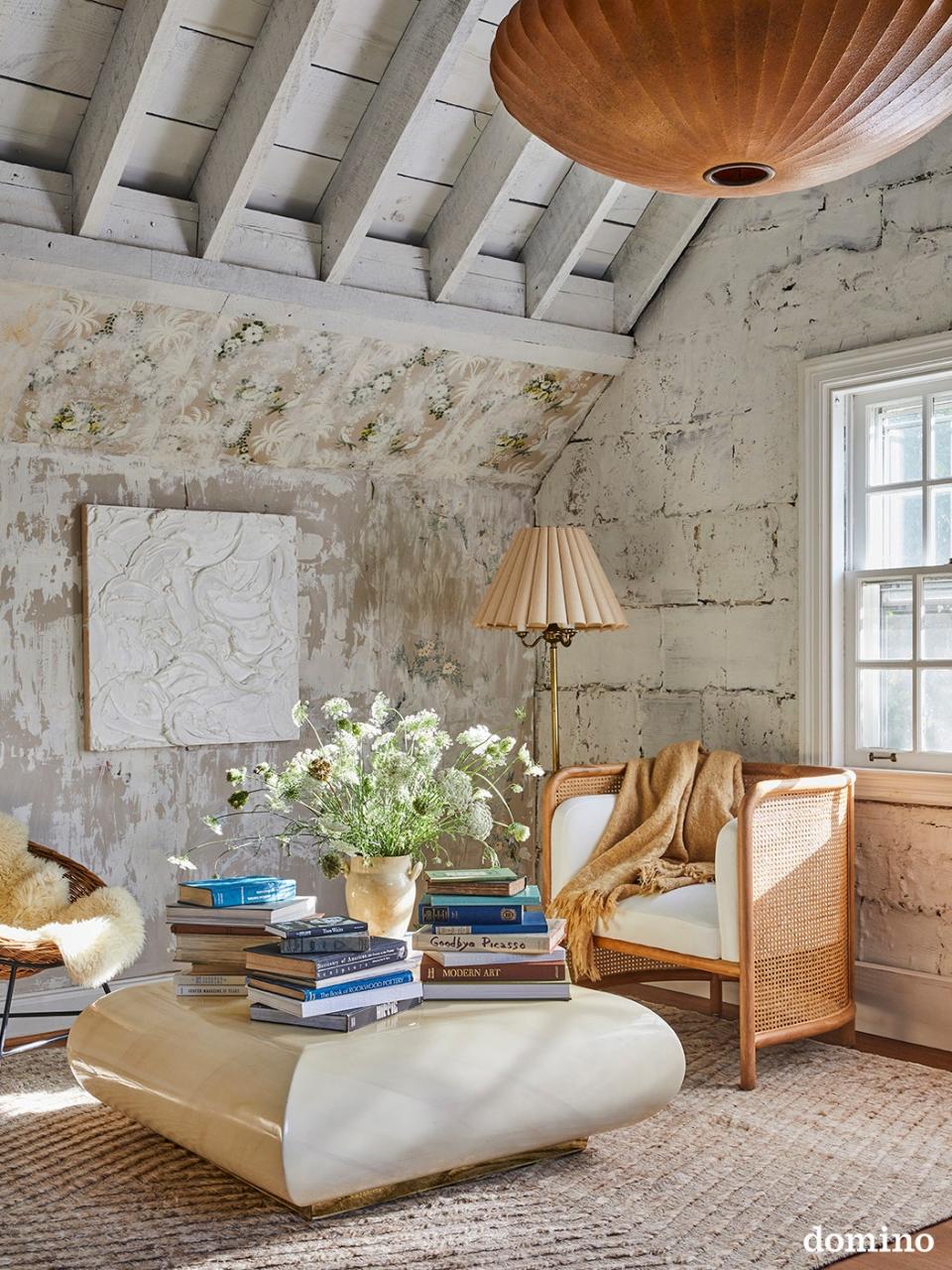Take a Step Inside Leanne Ford’s Incredibly Inviting Cottage Outside of Pittsburgh
There’s something therapeutic about getting lost in someone else’s carefully curated space. Not in the creepy “I am peeping through your open window” kind of way—I’m talking about the near-hour that could be spent diving into the photos of the cottage on interior designer Leanne Ford’s property outside of Pittsburgh. Taking in the details of Leanne’s space can only be described as ASMR for design enthusiasts. You can read the full story and take in all of the pictures over on Domino.
The designer—who stars in HGTV’s “Restored by the Fords” series alongside her brother, Steve Ford—recently moved to a town outside of Pittsburgh with her husband, Erik, and one-year-old daughter, Ever, from L.A., a decision in part fueled by the COVID-19 pandemic and the universal draw to be closer to family. “My husband, Erik, and I had a lot, and I do mean a lot, of discussions,” she says in the cover story. “What does our future look like now? What would be best for quality of life? Once we actually looked closely at the life we had chosen, our priorities shifted in one swoop.” Moving was just the beginning: Leanne’s new home was not only slated for the Domino exclusive, but it will also be featured on an episode of “Home Again With the Fords,” a new series that debuts in January. Needless to say, there was a particular type of fervor involved in getting the space ready on a deadline.
But whatever uneasiness may have been present amid such pressure is far from apparent in the finished product. Leanne took her iconic white-on-white color palette and introduced delightful layers of texture that make you want to reach out and touch the many surfaces yourself. But some of the most interesting parts of the cottage are what can only be described as spontaneous. “Twenty-four hours before the reveal, I still didn’t feel good about it,” says the designer. “I called my contractor and our painter, and I was like, ‘We’ve got to paint the ceiling white.’ That happened literally within a day of finishing and putting all of the furniture in.” Another example is the warm, coffee-stained walls in the cottage. Yes, coffee-stained—as in, Leanne took her husband’s leftover pour-over brew and rubbed it on the walls. She explains the outcome in the finished story: “When I came back the next day, it had set in rather, um, intensely, and I sat there thinking, Did I just ruin this project? But it actually came out beautifully. The glow that comes off of them is flattering.” Agreed.

Leanne’s space is inviting, there’s no denying that. COVID-19 has forced many of us to get to know our own spaces far more intimately than we ever imagined we would. When asked about tips for those inspired by her own cottage and looking to refresh their own spaces, she had a few thought-starters: “My biggest tip is to rethink what you’re using rooms for,” she says. “We live differently right now than we did last year at this time. You may not need a proper dining room—you may be fine eating in the kitchen. Turn your dining room into your office and get out of your bedroom. Something I did when I was little, and I still find myself doing, is turning a closet into an office space. I put a desk in there, I put a corkboard in there, I have my printer and an outlet. You can close the door, and you’re out of your office. The junk is gone. Open the door, it’s time to work.”
For those without spare closet space, there’s another simple adjustment you can make to change the way your home feels throughout the day. “Lighting is hugely important,” Leanne says. “If you’re able to put everything on a dimmer, do it. It’s much easier than you think—it’s simply switching out a light switch. I’m working with Legrand and I’m happy to recommend them as it’s such a good-looking dimmer. So, at 5 p.m., dim the lights, put the music on, and, like most of America, open wine. You instantly change the atmosphere.”
Originally Appeared on Architectural Digest

